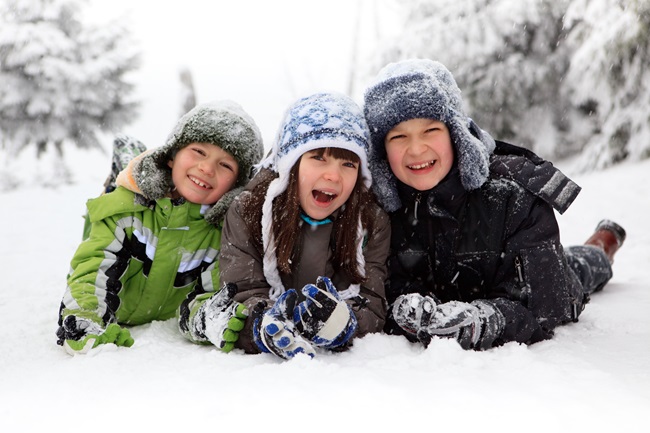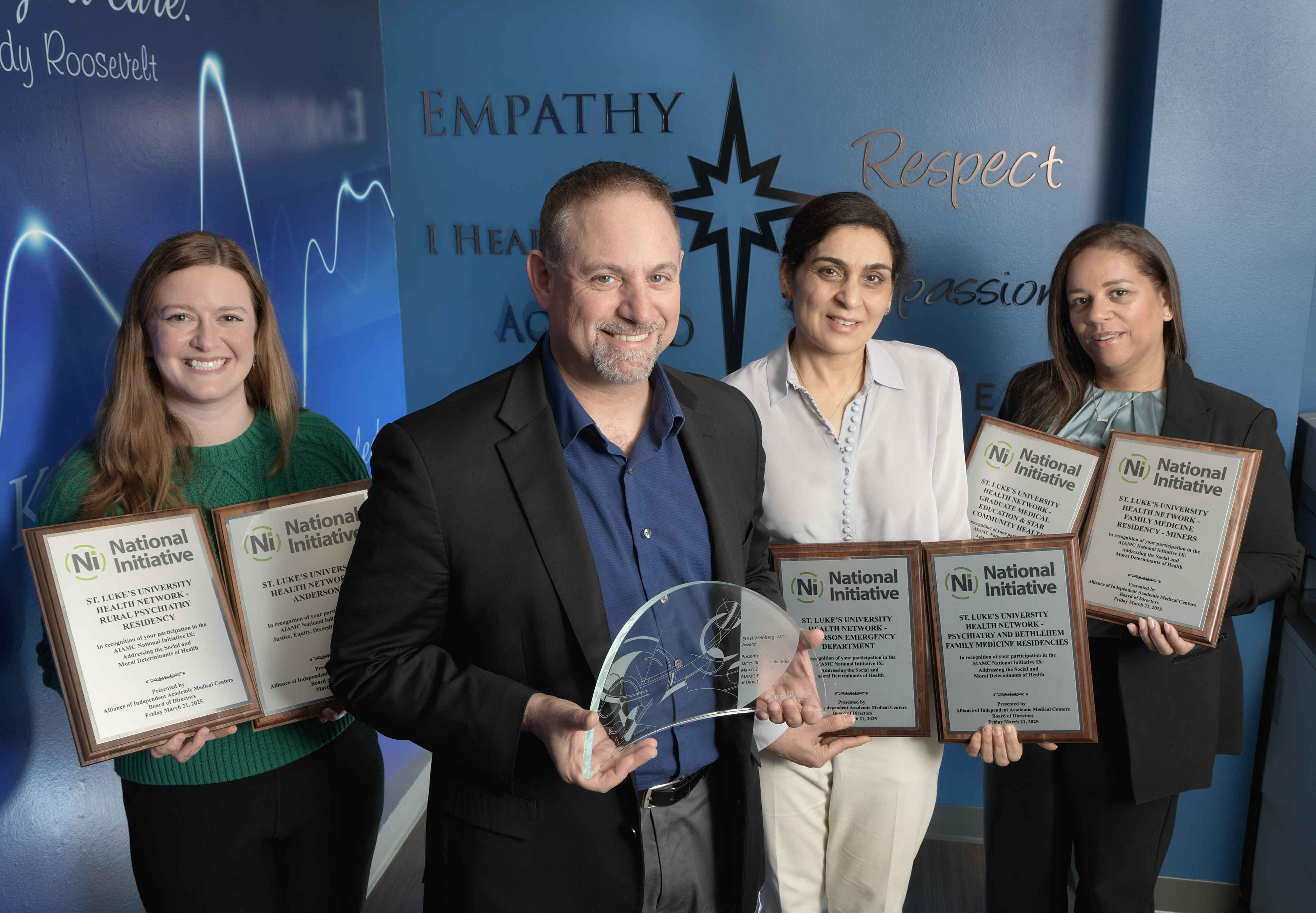Yes, Kids Can Play Outside!
February 07, 2018

BUT, there is good news! Yes, kids can play outside, even in the cold and snow! There are just a few things to keep in mind as they venture out into the frozen tundra. Vhada Sharma, MD, of St. Luke’s Anderson Pediatrics, breaks it down:
● Make them take breaks- Kids are notorious for losing track of time and moms are notorious for getting distracting with things like working from home or unloading the dishwasher, so a good old-fashioned timer or a timer on your smartphone or voice-enable device works well as a reminder to make the kids come inside for awhile. Check their hands and feet and face every half hour or so and make them take a hot chocolate break after an hour, depending on the conditions outside and the age of the child. Dr. Sharma says, “pay special attention to little kids to watch for overexposure — it won’t really register when they get too cold.”
● All that soft, pillowy snow doesn’t ensure safety - Make sure to peak out at kids often when they are playing outside in the cold to be sure they aren’t doing anything daring or dangerous while sledding, skating, throwing snowballs or making a snow fort. And leave the long scarves inside and make sure drawstrings around hoods are tucked away safely to avoid getting caught or tangled.
● Helmets aren’t just for riding bikes - They are also for ice skating, skiing, snowboarding and sledding too. Make sure the play area is not dangerously steep or crowded and free from cars, fences, trees or hand railings that could cause a collision. A hockey helmet or one specifically for winter sport is ideal, but bike helmets can work in a pinch.
● Wet + Cold = Frostbite - The object is to keep skin dry. Layer, layer, layer and don’t allow any skin to be exposed (except areas around the face for breathing, but most of the head should be covered.) Make sure everyone’s outermost layer is waterproof or water resistant. “Frostbite is exactly what it sounds like,” explains Dr. Sharma. “It’s when your nose, fingers, toes, mostly the extremities get “bitten” by cold and become frozen.” Dr. Sharma warns that kids can get hypothermia quicker than adults so it’s extra important in frigid conditions to dress your kids warmly and prevent them from getting wet. “Hypothermia happens when the body’s core temperature drops below normal due to exposure to cold,” says Dr. Sharma. ”Since kids succumb faster than adults, limit time outdoors when it is very cold.” *
● Summer safety tips apply in the winter too - Just because it’s cold, doesn’t mean the sun can’t burn - if kids are going to be outside for extended periods of time, dig into your beach bag for that sunscreen; sunglasses can also help them against winter glare. And something else parents often only associate with warm weather is staying hydrated; but it’s important in the cold weather when playing outside or engaging in snow activities too.
● Flu bugs are still going strong - Playing outside in the cold is great, but kids are still mostly inside in the winter and being inside tends to lead to germ-sharing. “Definitely important in any season, remind kids that hand-washing can keep germs and viruses at bay,” says Dr. Sharma. Make sure your kids wash their hands well and often at home and at school.
*For first aid tips for frostbite and hypothermia, consult the American Academy of Pediatrics or call 911 immediately if you notice any symptoms.
Media Contact:
Sam Kennedy, Corporate Communications Director, 484-526-4134, samuel.kennedy@sluhn.org
About St. Luke’s
Founded in 1872, St. Luke’s University Health Network (SLUHN) is a fully integrated, regional, non-profit network providing services at nine hospitals and more than 300 outpatient sites. With annual net revenue of $1.7 billion, the network’s service area includes 10 counties: Lehigh, Northampton, Carbon, Schuylkill, Bucks, Montgomery, Berks and Monroe counties in Pennsylvania and Warren and Hunterdon counties in New Jersey. Dedicated to advancing medical education, St. Luke’s is a major teaching hospital – the only one in the Greater Lehigh Valley. In partnership with Temple University, St. Luke’s created the region’s first and only regional medical school campus. It also operates the nation’s longest continuously operating School of Nursing, established in 1884, and 23 fully accredited graduate medical educational programs with 189 residents. Repeatedly, including 2017, St. Luke’s earned Truven’s 100 Top Major Teaching Hospital and 50 Top Cardiovascular Program designations, in addition to other honors for clinical excellence. St. Luke’s, utilizing the EPIC electronic medical record (EMR) system, is a multi-year recipient of the Most Wired award recognizing the breadth of St. Luke’s information technology applications such as telehealth, online scheduling and online pricing information. St. Luke’s is also recognized as one of the state’s lowest cost providers.
Latest News


April 10, 2025
National Recognition for SLUHN Graduate Medical Education

April 09, 2025
In Safe Hands Award

April 08, 2025
